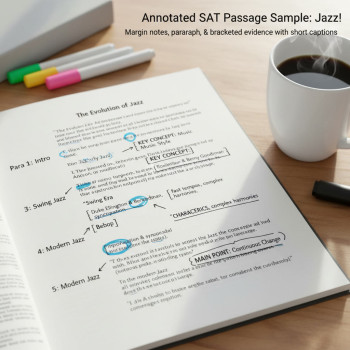Introduction — Why the SAT still matters for many Texas A&M applicants
Planning for college can feel like navigating a long, sometimes confusing map. If Texas A&M University (the main campus in College Station) is on your map, one question that often pops up is: “Do I need to submit an SAT score?” The short answer is: it depends — but understanding how admissions teams view scores, what score ranges are competitive, and how to present your strongest application will make the process far less stressful.

This guide walks students and parents through Texas A&M’s SAT approach, what competitive scores look like, timeline and testing strategy for the Digital SAT, and realistic steps you can take (including targeted tutoring like Sparkl’s personalized 1-on-1 programs) to make every hour of prep count.
Understanding Texas A&M’s SAT policy — what admissions offices typically look for
Institutions often change how they use standardized tests, so it’s important to treat policies as flexible. Broadly, many public universities — including large flagship campuses — list SAT/ACT scores as “considered if submitted.” That means:
- Students can choose whether to send scores (test-optional).
- If you submit scores, those scores will be reviewed and may strengthen an application when paired with strong grades, essays, and extracurriculars.
- If you don’t submit scores, other parts of your application (GPA, coursework rigor, recommendations, activities, and essays) will carry the weight.
So, whether to submit scores is a strategic choice: submit them if they add value; skip them if they don’t.
How to decide whether to submit Digital SAT scores
Ask yourself three questions:
- Is my score at or above the typical range for admitted students? If yes, submitting can help.
- Do my scores complement a strong GPA and advanced coursework? If yes, they can reinforce academic readiness.
- Would submitting a test score highlight a specific strength (e.g., evidence-based reading for a humanities applicant or math for an engineering hopeful)? If yes, it’s worth considering.
What is a competitive SAT score for Texas A&M?
Competitive scores vary by major and class profile. For many admitted undergraduates at large state flagships, admitted students’ middle 50% SAT ranges tend to cluster well above minimum admission thresholds. Use these ranges as a benchmark, not a pass/fail rule.
| Applicant Type | Competitive Composite SAT Range (Approx.) | Suggested Target |
|---|---|---|
| Engineering & STEM-focused majors | Typically in the higher end of admitted scores | 1380–1500+ |
| Business and Economics | Often above the general mid-range | 1300–1450 |
| Humanities, Social Sciences | Varies; strong reading/writing helps | 1250–1400 |
| Applicants aiming for scholarships | Higher-than-average; scholarships often use numeric cutoffs | 1400–1550 |
Note: those target bands reflect competitive positioning. Even if your score is slightly below a range, a compelling academic record and unique experiences can still make your application strong.
Digital SAT specifics — what’s different and what remains important
The SAT has transitioned to a digital format. The core purpose is the same: it’s an objective measure that helps admission teams compare applicants from different schools and backgrounds. Here’s what to focus on as you plan your timeline and prep.
Key Digital SAT test features to know
- Section structure: shorter modules that still assess reading, writing, and math skills; adaptive in structure across test modules.
- Time management: practice pacing in short bursts that mimic digital modules rather than one long paper section.
- Calculator policy: digital calculators are available for portions of the math section — make sure to get comfortable with on-screen tools.
- Scoring: composite scores are comparable to prior SAT scales, but interpret them as a whole — subscores reveal strengths and weaknesses.
Practical prep tips for the Digital SAT
- Practice on digital platforms. Simulate the test experience with official practice tests on a laptop or tablet to build stamina and familiarity.
- Focus on module pacing. Train yourself to finish smaller groups of questions accurately in the allotted time rather than racing through long sections.
- Use realistic practice questions. Quality over quantity — review mistakes carefully, and understand the reasoning behind each correct answer.
- Strengthen foundational skills. The SAT rewards steady reading habits, algebra fluency, and problem-solving strategies more than trick-question tricks.
How admissions reads your file: the broader context beyond the SAT
Texas A&M (like many public flagships) evaluates applications holistically. SAT scores, if submitted, are one element among many. Admissions officers look at:
- Transcript strength and course rigor (AP, IB, honors, dual-credit).
- Grade trends — an upward trajectory matters.
- Personal essays — unique voice, reflection, and clarity.
- Extracurricular depth — leadership, sustained commitment, and impact.
- Letters of recommendation (when required or permitted) and optional additions like portfolios for some programs.
If you’re applying to a selective major (for example, engineering, architecture, or certain business tracks), departmental benchmarks may be more competitive — so pair a strong test performance with demonstrable coursework and relevant activities.
Real-world example — two applicant profiles
Consider these simplified, anonymized examples to see how scores factor in:
- Student A: 3.95 GPA with AP calculus and physics, SAT 1420, captain of robotics team, summer research internship. A strong fit for engineering; SAT reinforces demonstrated course rigor.
- Student B: 3.65 GPA steadily improving to A’s, SAT 1180, strong community leadership and unique personal story. Even with a lower score, a compelling narrative and upward grade trend can make admission possible (especially under test-optional review).
Should you retake the SAT? A decision flow
Retesting is a smart, measured decision, not a reflex. Ask these guiding questions:
- Does your latest score sit comfortably within or above target bands for your intended major? If yes, you may be done.
- Is there a clear, fixable reason your score was lower (timing, unfamiliarity with digital format, weak pacing, or a subject gap)? If yes, targeted prep can boost your score.
- Do you have time in your schedule to meaningfully improve before application deadlines? If yes, consider a focused study block and one retake.
How much improvement is realistic?
With targeted work and active review, many students raise their score by 50–150 points. The key is direction: random practice rarely moves the needle. Instead, analyze mistakes, focus on high-leverage skills (algebra fundamentals, command of evidence in reading, and efficient grid-in strategies), and practice under timed, digital conditions.
Timeline: When to test for Texas A&M applications
Timing matters. Use this practical timeline as a baseline and adapt to your academic calendar and application plans.
- Junior year spring: Take a full-length digital practice test to set a baseline. If you’re already prepared, consider an official test date.
- Summer after junior year: Focused prep months (perfect time for 1-on-1 tutoring or prep intensives). Take an official Digital SAT if ready.
- Senior year fall: One final retake if you need a higher score. Aim to have scores ready before early deadlines or by the regular application deadline (often December 1 for many Texas public universities).
Application checklist related to the SAT and testing
- Decide early whether you’ll submit scores — don’t wait until the last minute to make the call.
- Register for the Digital SAT on dates that allow enough time for a retake if needed before your application deadlines.
- Keep digital practice realistic: full-length sections, official question types, and timing that matches test-day experience.
- Document strong non-test evidence: AP scores, dual-credit transcripts, awards, and service/leadership roles.
- Prepare your essay and activities list to tell a coherent story that complements your academic profile.
Study strategies that actually move scores — not busywork
Many students waste time doing endless practice questions with little reflection. Replace quantity with smart practice:
- Diagnose: Start with a diagnostic digital test to identify weak areas and error patterns.
- Target: Build a short, repeatable study plan that focuses on those weak spots (for example: four weeks on algebra fundamentals; two weeks on passage strategy; one week of timed math modules).
- Drill wisely: Use spaced repetition for formula familiarity and evidence-based reading techniques.
- Simulate: Do weekly full digital sections under test conditions and review every mistake.
- Invest in feedback: Work with a coach or tutor who tracks patterns and provides immediate correction — personalized guidance often beats generic video lessons.
Where personalized tutoring helps — a note about Sparkl’s approach
Targeted, one-on-one tutoring can be transformational when it’s personalized. Programs like Sparkl’s offer 1-on-1 guidance, tailored study plans, and expert tutors who break down patterns in your work. They can help you build a data-driven prep routine (using practice test analytics), tighten pacing, and focus on the exact skills that will improve your digital SAT score — all while fitting prep around your school and activity commitments.
Putting scores in context: scholarships and majors
High SAT scores can unlock scholarship opportunities and strengthen applications to competitive majors. If you’re aiming for merit scholarships or selective programs within Texas A&M, consider these steps:
- Research scholarship cutoffs early; build a plan to meet or exceed those thresholds.
- For major-specific entry (e.g., engineering honors programs), pair strong math scores with rigorous coursework and relevant extracurriculars.
- Showcase project-based achievements — research, competitions, or internships that match your intended field.
Sample 12-week study plan for a busy student
This plan assumes a baseline SAT that you want to raise by 80–150 points. Adjust weeks based on your baseline, schedule, and deadlines.
| Weeks | Focus | Weekly Commitment |
|---|---|---|
| 1 | Diagnostic digital test + error analysis | 4–6 hours |
| 2–4 | Core math fundamentals (algebra, problem solving) | 6–8 hours (practice + review) |
| 5–6 | Reading strategies and evidence-based writing | 5–7 hours |
| 7–8 | Mixed practice, timed modules, pacing drills | 6–8 hours |
| 9–10 | Full digital practice tests + focused weak-point work | 8–10 hours |
| 11–12 | Polish, test-day routines, logistics, stress management | 4–6 hours |
Test-day basics: how to show up ready
- Device readiness: Confirm the test center’s device and software rules; practice with a laptop/tablet similar to what you’ll use.
- Logistics: Know the test center location and arrival time; have backup ID and required materials ready the night before.
- Sleep and nutrition: Aim for consistent sleep the week before; eat a balanced meal before the test and bring water and snacks for breaks.
- Mindset: Use breathing or brief mindfulness techniques to reduce nerves and keep focus sharp during modules.
After the test: interpreting scores and next steps
When you get your scores back:
- Compare them to your target bands and to the requirements/guidelines for your intended major at Texas A&M.
- If scores are sufficient, invest your remaining energy into essays, activities, and application polish.
- If scores fall short and you have time, make a focused plan for a retake — target a narrow set of weaknesses rather than broad, unfocused practice.
Final encouragement: build the whole application, not just the score
Standardized tests matter — but they’re one piece of your narrative. Texas A&M looks for students who will thrive academically and contribute meaningfully to campus life. Keep your story cohesive: your coursework, test strategy, personal essays, and extracurriculars should all point to who you are and why you’ll succeed at A&M.

Practical help can speed your progress. If you or your student could benefit from personalized, data-driven prep, tutoring options that offer 1-on-1 guidance, tailored study plans, and expert feedback (such as Sparkl’s programs) can make planning efficient and help reduce test anxiety. The right coach helps you practice smarter, not harder — turning practice test data into a focused plan that fits your life.
Quick checklist before you submit
- Have you decided whether your SAT score strengthens your application? If yes, submit it; if no, prepare the rest of your application to shine without it.
- Does your planned test timeline allow for at least one retake before application deadlines? If not, consider early testing.
- Have you documented rigorous coursework and meaningful extracurriculars that support your major choice?
- Have you rehearsed and polished your essays so they tell a clear, authentic story about your interests and contributions?
Closing — a steady, confident approach wins
Applying to Texas A&M doesn’t have to mean chasing one magic number. Treat the Digital SAT as a tool in your toolkit: use it when it strengthens your file, and don’t let it overshadow the many ways you can show readiness and promise. Whether your path includes submitting scores or focusing on the rest of your application, a clear plan, consistent practice, and targeted support will make the journey manageable and, yes, even rewarding.
If you’d like help building a study plan or deciding whether to submit scores, consider a short, personalized tutoring consultation. With 1-on-1 coaching, tailored study plans, and insights into practice-test trends, you can make informed, confident choices — and spend your energy where it matters most.
Good luck, and remember: your college application is one chapter of a longer story. Build it thoughtfully, and it will open doors to the next chapter of your life.



















No Comments
Leave a comment Cancel